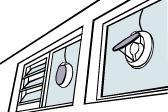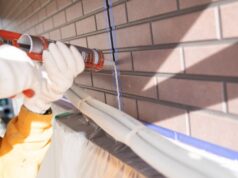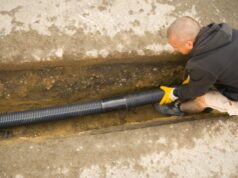
Gas itself is a volatile fuel – but carbon monoxide, a byproduct of gas, is in some senses far more dangerous and can easily poison you. Find out how to ensure your gas appliances are safely installed and vented.

While gas is very useful, it’s important to understand that the byproducts that are created when it burns can be lethal. Carbon monoxide (CO), in particular, is released directly into the air when you’re using unflued gas appliances, and is often referred to as ‘the silent killer’. For that reason, you should never use unflued gas appliances indoors. Even with vented gas appliances, leaks or blockages in vents can create a serious risk of CO poisoning. CO has no smell or taste, and is invisible, so it’s extremely important that you ensure that the proper measures are in place to prevent poisoning in your home.
Modern day problems
Many carbon monoxide poisonings and fatalities can be attributed to a lack of regular servicing of gas appliances, incorrectly operating appliances, and poor ventilation of the heated space.
To ensure that your gas appliances don’t pose a risk, there are several things that need to be looked at: evidence about how an appliance has been previously operating, how clean it is, how well exhaust fans work, the consistency of the gas supply and pressure, the condition and performance of the flue or chimney, how well ventilated your home is, and how regularly your appliances are checked or tested. Ideally, you should have your appliances inspected at least once every two years.
CO poisoning with flued gas appliances
One way that CO poisoning can occur with otherwise properly flued gas appliances is as the result of an exhaust fan. Turning an exhaust fan on in a room (or even in an adjacent area) can alter the pressure, and affect the flueing efficiency of a gas appliance (the natural draft on conventionally open flued type appliances).
If there’s insufficient way for fresh air to replace the air being extracted by the exhaust fan, it’s possible that air will be drawn back into your home through your gas appliance’s flue. This is obviously a big problem, because it also means that the flue isn’t doing its job and your home’s filling with poisonous carbon monoxide.
Accident prevention
Potential gas appliance problems in existing homes and new constructions can arise as a result of holes in chimneys and hearths that aren’t sealed properly, gas burner pressure issues, aeration problems, spills, and the general cleanliness and integrity of the cooker or heater you’re using. It’s up to your plumber or gasfitter to ensure that your appliances are working in the manner that theyre’ supposed to. It’s also up to you to ensure that your appliances are well maintained and regularly inspected, though.
Where possible, you should ensure that your house or the room where the appliance is being used is well ventilated. Unfortunately many new constructions aren’t particularly well ventilated, as it’s often at odds with the need to build a tightly sealed building for reasons of heating and cooling efficiency. Well sealed buildings, while preferable for efficiency reasons and star ratings, can actually become dangerous with the operation of some gas appliances.
In some states, houses built in extreme bushfire prone areas are now required to have wire mesh on gas cowls for ember protection too. Where this is the case, it’s very important to regularly check the mesh to ensure that it’s clean, and that it hasn’t become blocked over time.
Other things worth taking note of:
1. In some states, LPG appliances can be un-flued, as long as the correct ventilation requirements are satisfied. Correct appliance operation is critical too. This includes LPG fridges.
2. If a gas burner appears to be running rich or lean, it’s likely that there is a problem.
3. Uncontrolled CO emissions can occur when the flame’s not burning where or how it’s designed to burn.
4. Testing for CO is only part of the overall safety equation. Always ensure that there’s sufficient ventilation when you use gas appliances, and that you use them only for the purposes for which they’re designed. Again, you should never use gas appliances that are designed for outdoor use indoors.





